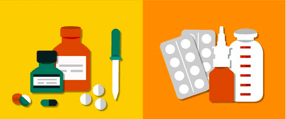Pharmaceutical cost can have an impact on your organization's PBM, stay ahead of the ball by reviewing these four factors that influence pharmacy cost.
Pharmacy cost trends can be closely linked to four key factors:


Drug Prices and rebates
Whether we like it are not the fact is that the price of drugs is rising. In 2016, prescription drug prices rose an average of 7%. However, through the rebates and other discounts that insurers and pharmacy-benefit managers retrieve from manufacturers, the net price growth is much lower than it has been in years.
Cost Sharing
Your plan design is the second biggest factor when it comes to pharmacy trend cost. Depending on how you use deductibles, co-pays or co-insurance, you could be seeing cost decline significantly. When patients are faced with paying an average of 46% of their pharmacy costs out of pocket (compared with just 28% of their hospital costs), plan design becomes that much more important. A useful tip is to pay attention to whether your prescriptions will be covered with a simple copay or if you’ll need to fulfill your annual deductible first.
Drug Mix
The types of drugs that are being dispensed also has an effect on pharmacy cost trends. It's no secret that brand-name drugs are more expensive than generic, but did you know that generics have almost the same active ingredients as brand names? Because brand-name drugs remain the key driver of wholesalers’ revenue growth they are the ones being pushed on consumers. One way to stay on top of drug mix is by finding out if any new plan you’re considering utilizes drug tiers, than find out how much you’d pay for drugs in each category.
Drug Utilization
Take notice of the amount of people on your plan that utilize benefits and note the amount of prescriptions they take. Statistics show that up to 60 percent of Americans take some variety of pharmaceutical medications as part of their daily routine with 15 percent relying on five or more prescriptions. Based on the amount of prescriptions being used, some corporations enforce restrictions. These restrictions can apply to quantity (limiting the amount of a particular medication that can be receive in a given time), authorization (requiring plan members to get plan approval before filling a prescription), or drug type (requiring plan members to try generic / low-cost medications before using brand-name drugs).
Employer's Health Podcast
Find out more about Pharmacy Benefit Management trends on the Employer's Health Podcast. Some of their more popular topics include, Fiduciary Duties and What is a Market Check and Pricing Improvement Analyst?

Register for the Employer's Health Webinar
Specialty Drugs: A Look Across Pharmacy and Medical Benefits
This webinar will discuss:
- What makes specialty drugs special
- Specialty's role in historic and future trends
- Utilization management, site-of-care and formulary strategies for specialty drugs
- Contracting for specialty - carve-in vs. carve-out



